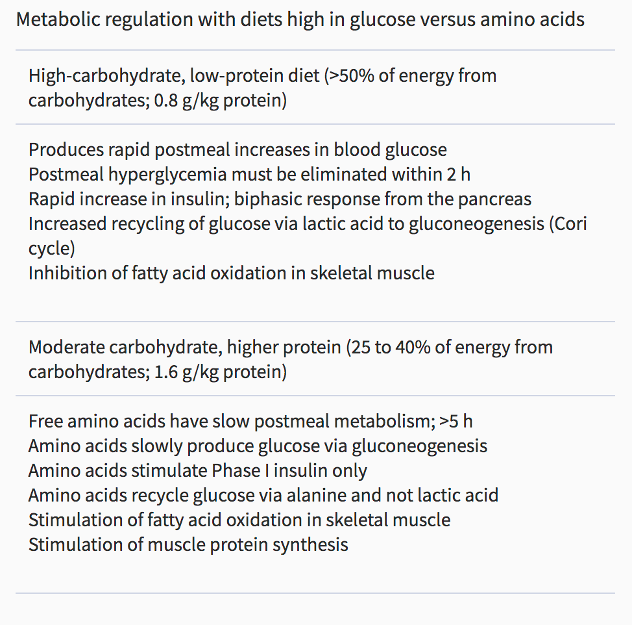The recommended daily allowance defines a range of dietary intakes that are acceptable for each nutrient. The recommended minimum daily dose has the goal of preventing a clear deficiency, while higher intakes are often recommended to optimize specific health outcomes.
Currently, studies show that people over the age of 65 may benefit from specific amounts, qualities, and distribution of protein beyond the current RDA recommendations. A new study published in the scientific journal Advances in Nutrition highlights the benefits of protein-rich diets to optimize health during aging, inactivity, and metabolic dysfunction, such as type 2 diabetes mellitus.
Alejandro Monzó – Neolife Nutrition and Nursing Unit
The current recommended daily protein dose is 0.8 g/kg of body weight
Proteins are complex macromolecules, of high molecular weight, the main functional and structural component of cells with numerous functions in the body to which they provide nitrogen and amino acids (1). Protein accounts for approximately 17% of body mass and despite its functional diversity, 25% of it is structural protein (collagen, actin, myosin) and hemoglobin.
Body protein is distributed among all organs, but mostly in muscle tissue (40%). Its importance lies in that it is the main source of amino acids in stressful situations, and their decrease represents a functional protein loss (1). Amino acids may be classified based on their biological activity (1,2):
- Essential: those that the body is unable to synthesize and needs to maintain its structures. It includes the nine amino acids classified as essential to an adult’s diet: histidine, leucine, isoleucine, lysine, methionine, phenylalanine, threonine, tryptophan, and valine.
- Semi-essential: also called conditionally essential. The body synthesizes them in sufficient quantities to meet the basic requirements, but in special physiological or pathological circumstances, production is insufficient and may become essential. They include arginine, glutamine, cysteine, cystine, taurine, proline, and glutamic acid.
- Non-essential: synthesized in sufficient quantities by the body. The include alanine, aspartic acid, and glutamic acid.
Proteins are a macronutrient present in food, whose importance lies in their ability to provide amino acids to maintain body protein and its increase during growth. Dietary proteins are found in both animal products (eggs, meats, fish, dairy) and vegetables (nuts, legumes, whole grains, soybeans and their derivatives, algae, etc.), present in variable proportions (3,4). It is important to prioritize plant-based foods, thanks to the health benefits that they provide.
A large number of studies and clinical trials show that the loss of body protein is associated with numerous pathological disorders and an increase in morbidity and mortality (2,3). A new study published in the journal Advances in Nutrition shows the importance of adequate protein intake, especially in the elderly (5). Although the recommended daily dose of protein of 0.8 kg/kg of body weight is enough to prevent deficiencies, there is evidence that many adults may benefit from the quantity, quality, and distribution of proteins beyond the guidelines currently set forth by the RDA.
The amount of protein you need will depend on your daily energy needs. The recommended daily allowance of protein for adults ranges from 10-35% of their total caloric needs (equivalent to an amount between 0.8-2.5 g/kg/day). That is, a person who has a 2000 kcal diet could consume 100 g of protein, which would provide 20% of their total daily calories. However, regular protein consumption is generally low, with its health consequences, especially for the elderly population. The anabolic role of food proteins has been demonstrated during aging , as well as their positive impact on the prevention of several pathologies, such as sarcopenia, osteoporosis and the proper functioning of the immune system (1,2,3,5).
Moreover, one of the important points of the study states that current scientific evidence would indicate that optimal protein consumption is more than a mere percentage of total daily energy intake and that other factors such as consumption on specific times of the day and specific quantities or quality are also fundamental (5). Therefore, the aging process or decreased physical activity reduce the efficiency of protein renewal, especially in skeletal muscle and, consequently, leads to a reduction in muscle mass, strength, and metabolic regulation.
The reduction in efficiency, characterized as anabolic resistance, may be partially improved by increasing protein consumption in the diet and paying attention to their quality based on the time of day independently (2,3,5). The authors note that meals containing a contribution of 30 g or more of high quality protein, defined by a balanced profile of essential amino acids, including at least 2.5 g of leucine, may contribute to overcoming anabolic resistance in older adults and thus optimize the muscle health of this particularly vulnerable population.
Protein is also a macronutrient that contributes to metabolic regulation and energy balance and in particular to glucose metabolism (1,5). Both carbohydrates and dietary proteins produce blood sugar, both stimulating insulin release and both impacting skeletal muscle metabolism, but dietary proteins and carbohydrates impact blood sugar regulation in very different ways (table 1.), demonstrating that dietary protein improves blood sugar control, by providing benefits for managing type 2 diabetes.

Lastly, although there is increasingly more evidence that shows that the recommended daily allowance of protein may be insufficient to maintain muscle health in aging populations, there is still an unwillingness to recommend higher protein intakes. This may be due to the myth that consuming “too much” protein is associated with bone loss and deterioration of kidney function. However, there is no scientific evidence of this. In fact, protein seems to protect bone health, especially in the presence of an adequate amount of calcium and vitamin D. Similarly, increased protein intake in older adults (over 65) has also been shown to be associated with a reduction in mortality in cases of cancer (5).
Here at Neolife we always take into account the nutritional condition of our patients. We are specialists in treating the effects of aging, and one of the things we work on the most is the role of a healthy, balanced, and optimal diet, rich in nutrients like proteins, while prioritizing sources of plant origin. In the individualized follow up of our patients’ habit and lifestyle changes, the improvement of body composition is critical to achieving health and well-being, and dietary proteins play a fundamental role in their success.
BIBLIOGRAFÍA
(1) García Luna, P.P. & Pérez de la Cruz, A.J. (2013). “Nutrientes específicos: hacia una nutrición clínica individualizada”. Grupo Aula Médica, S.L. SENPE.
(2) De Luis Román, D.A. Bellido Guerrero, D. García Luna, P.P. Olivera Fuster, G. (2017). “Dietoterapia, nutrición clínica y metabolismo”. Tercera edición. Sociedad Española de Endocrinología y Nutrición. Grupo Aula Médica, S.L. Madrid, España.
(3) Redondo S., M.R. & González R., L.G. (2015). “Nutriguía: manual de nutrición clínica”. 2ªEdición. Editorial Médica Panamericana.
(4) (2021). “Protein in diet”. U.S. National Library of Medicine. URL: https://medlineplus.gov/ency/article/002467.htm
(5) Stuart, M.P. y otros. (2020). “Optimizing adult protein intake during catabolic health conditions”. Advances in Nutrition. Vol. 11(4): 1058-1069. URL: https://academic.oup.com/advances/article/11/4/S1058/5871183

